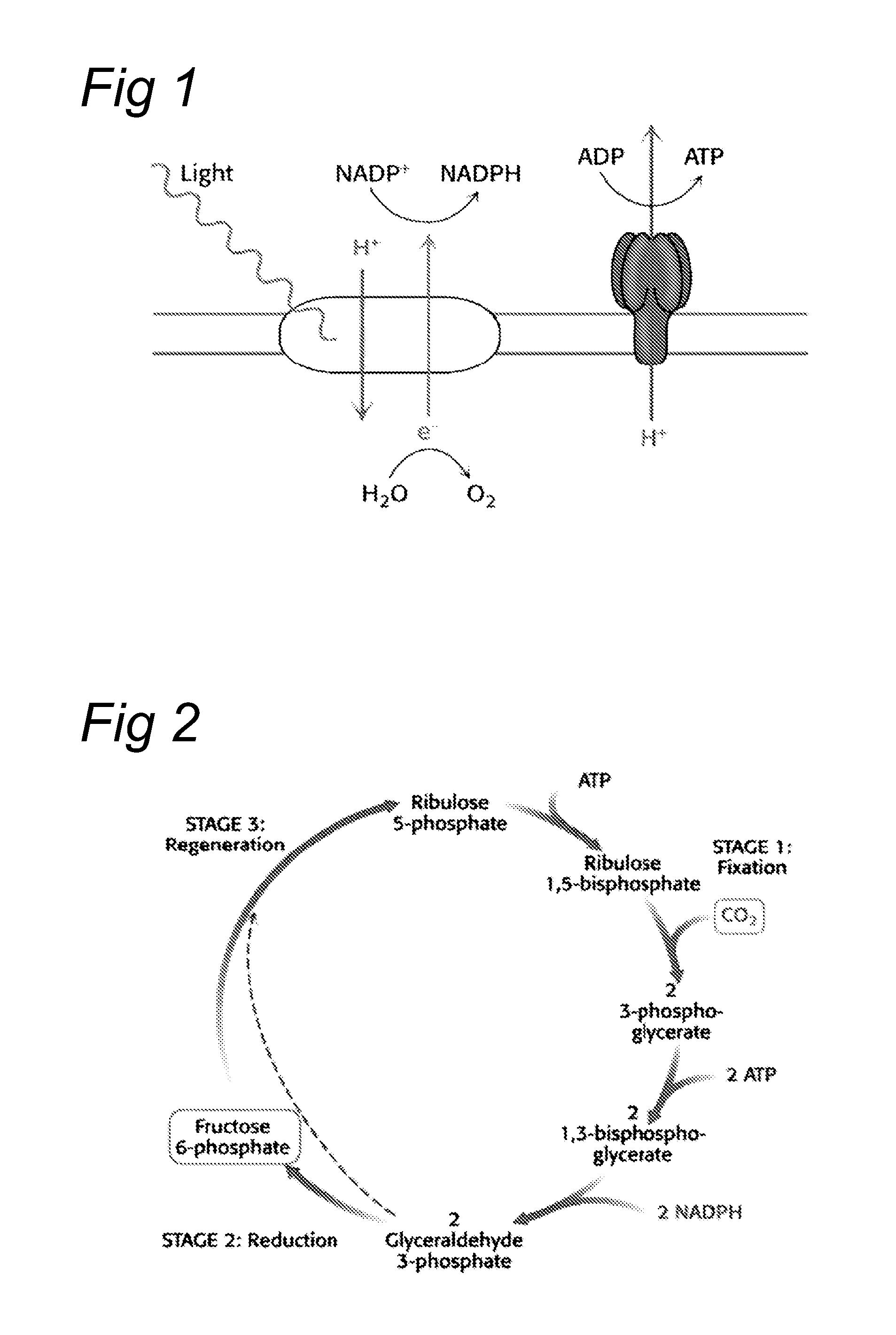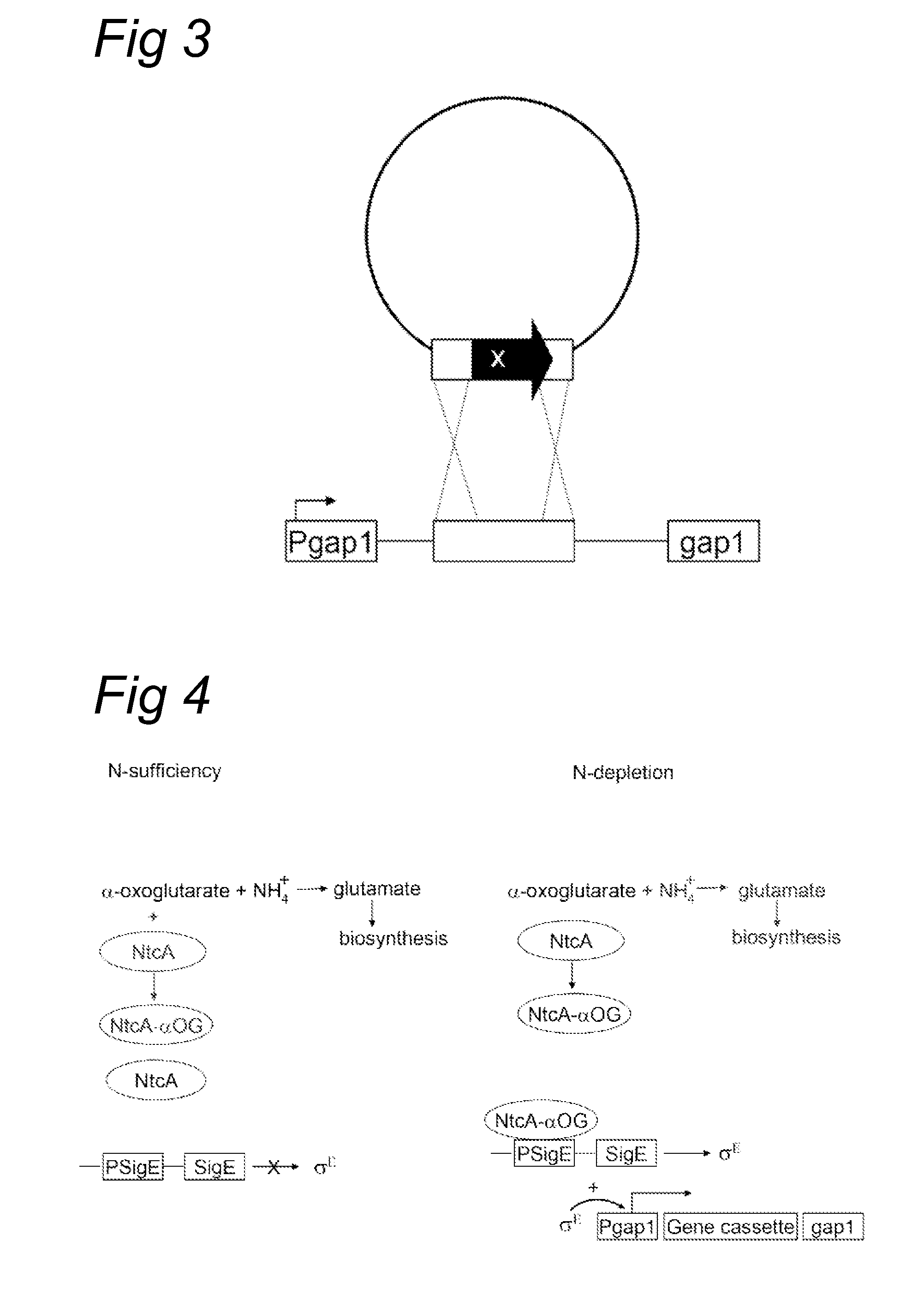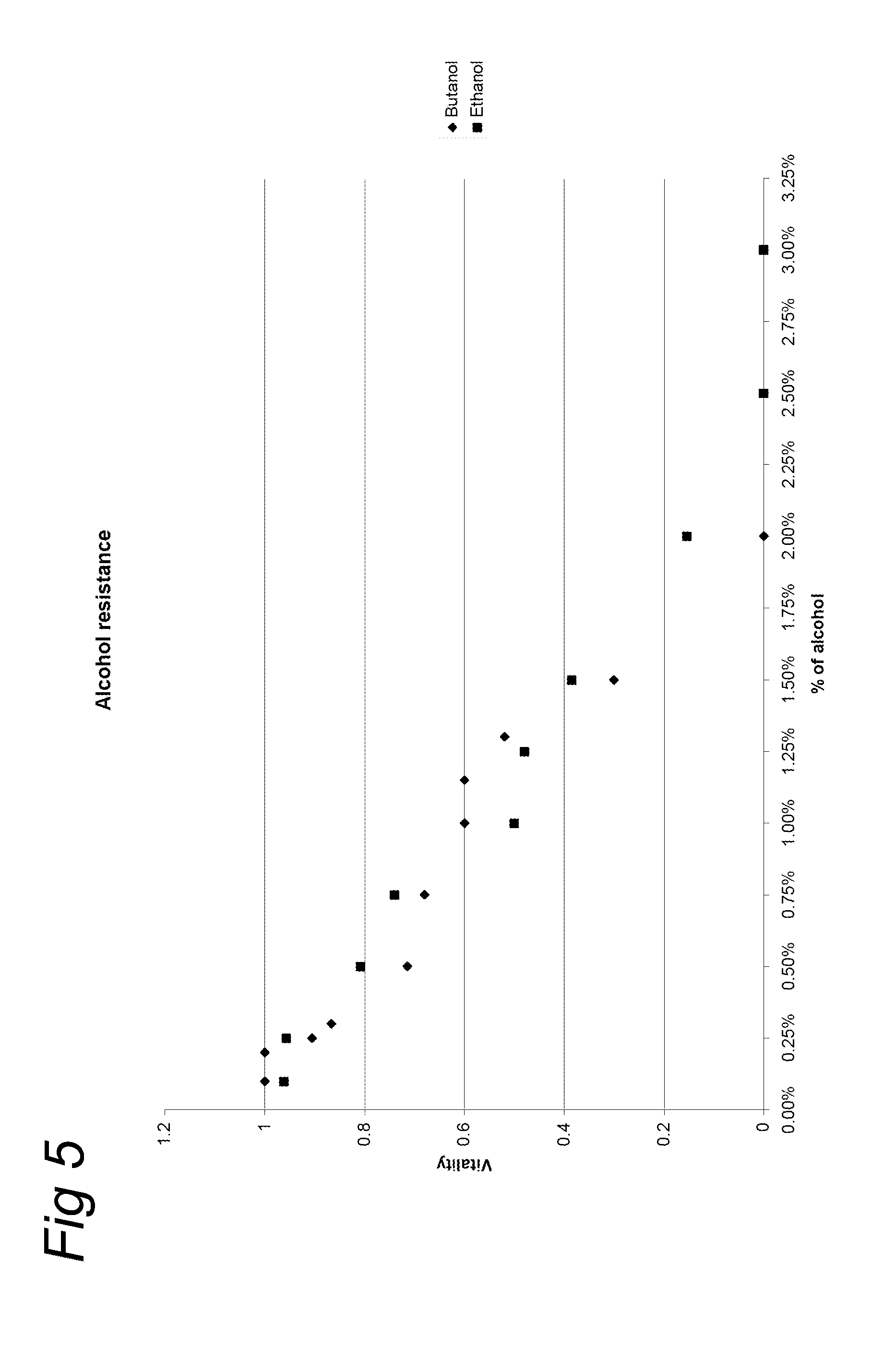Light-driven co2 reduction to organic compounds to serve as fuels or as industrial half products by an autotroph containing a fermentative gene cassette
a technology of autotrophs and gene cassettes, which is applied in the direction of biofuels, microorganisms, biochemical apparatus and processes, etc., can solve the problems of high co2 concentration in the atmosphere, high overall energy conservation efficiency of these methods, and affect all aspects of human activities. , to achieve the effect of high steady-state level of transcripts, more transcript molecules, and high cell densities
- Summary
- Abstract
- Description
- Claims
- Application Information
AI Technical Summary
Benefits of technology
Problems solved by technology
Method used
Image
Examples
example 1
Biochemical Background of the Cyanobacteria of the Invention
[0176]The energy, in the form of ATP, as well as the reductive power in the form of NADPH, that are both needed to drive the subsequent highly endergonic dark reactions of photosynthesis, are catalyzed by the two photosystems of oxygenic photosynthesis, PS-II and PS-I, arranged according to the well-known Z-scheme, plus the membrane-bound ATPase (FIG. 1).
[0177]In phototrophic organisms like Cyanobacteria, CO2 is fixed in the so-called Calvin cycle. This is a cyclic series of reductive steps that result in the net conversion of CO2 into C3 compounds, such as glyceraldehyde-3-phosphate, phosphoglycerate and pyruvate (FIG. 2).
[0178]This pathway is essentially endergonic and in Nature driven by sunlight. It consumes CO2 and water and yields C3 compounds (e.g. pyruvate) and oxygen:
CO2+H2O+Solar energy→C3 compounds+O2 (1)
[0179]This reaction cannot proceed spontaneously: It is driven by the consumption of the ATP and NADPH, gener...
example 2
Description of the Expression System Used
Genetic Cassettes
[0183]The identity of an organic product formed (and excreted into the environment) in the process of the invention depends on the species-specific gene cassettes (i.e. nucleic acid molecules represented by nucleotide sequences) that encode the respective biochemical pathway (see table 1). Preferred enzymes encoded by nucleic acid molecules are substantially oxygen insensitive.
TABLE 1Examples of preferred donor organisms for the nucleic acid molecules or genes to beintroduced into a Cyanobacterium with the pathway they catalyze. For e.g. the productionof ethanol and propanediol various alternative donor organisms can be suggested.donorgenespathwaySarcinaventriculipyruvate decarboxylase,Pyruvate → acetaldehydeLactobacillusbrevisalcohol dehydrogenaseAcetaldehyde → ethanolClostridiumthiolasepyruvate acetoacetylCoAacetobutilicumhydroxybutyrylCoAdehydrogenaseacetoacetylCoA → butyrylCoAcrotonasebutyryl-CoA dehydrogenasebutyrylCoA →...
example 3
Alcohol Resistance
[0186]Synechocystis PCC 6803 strain was grown on BG-11 medium (Stanier R Y, et al. Purification and properties of unicellular blue-green algae (order Chroococcales). Bacteriol. Rev. (1971) 35:171-205) in an orbital shaker at 30° C. under continuous illumination using two TL tubes, which provided average light intensity of approximately 70 μE·m−2·s−1. To quantify the influence of alcohols on the net growth rate, cells were grown without any addition (control) or with butanol, respectively ethanol added at various concentrations.
[0187]After 5 days, 100 μl of each culture was appropriately diluted and transferred to solid medium prepared from BG-11 and supplemented with 0.3% sodium thiosulfate, 10 mM N-tris[hydroxymethyl]-2-aminoethanesulfonic acid (TES) pH 8.2, 5 mM glucose and 1.5% bactoagar. Solid cultures were grown in an incubator 30° C. under continuous illumination. After a week, single colonies were observed and counted. The amount of colonies was compared to ...
PUM
| Property | Measurement | Unit |
|---|---|---|
| pH | aaaaa | aaaaa |
| path length | aaaaa | aaaaa |
| path length | aaaaa | aaaaa |
Abstract
Description
Claims
Application Information
 Login to View More
Login to View More - R&D
- Intellectual Property
- Life Sciences
- Materials
- Tech Scout
- Unparalleled Data Quality
- Higher Quality Content
- 60% Fewer Hallucinations
Browse by: Latest US Patents, China's latest patents, Technical Efficacy Thesaurus, Application Domain, Technology Topic, Popular Technical Reports.
© 2025 PatSnap. All rights reserved.Legal|Privacy policy|Modern Slavery Act Transparency Statement|Sitemap|About US| Contact US: help@patsnap.com



